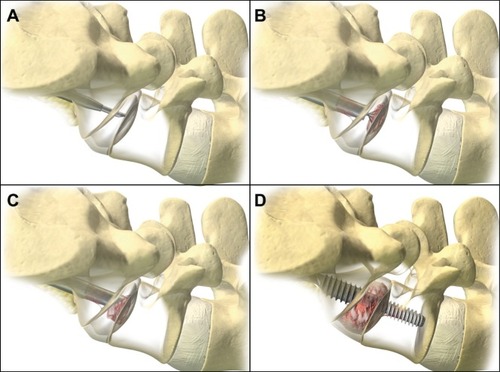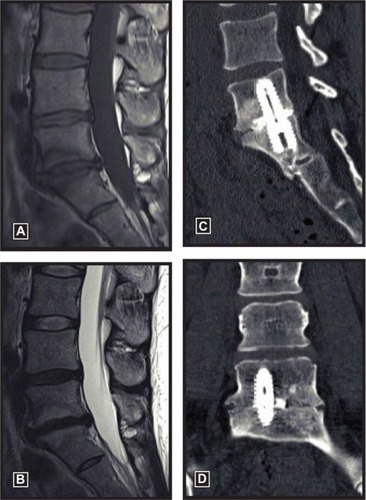Figures & data
Figure 1 The AxiaLIF rod.
Abbreviation: AxiaLIF, axial lumbar interbody fusion.

Figure 2 Presacral access with the AxiaLIF system.
Abbreviation: AxiaLIF, axial lumbar interbody fusion.

Table 1 Baseline patient characteristics
Table 2 Univariate baseline predictors of solid fusion at final postoperative follow-up
Figure 3 Preoperative T1 (A) and T2 (B) images of a 34-year-old woman with a 6-year history of back pain showing discopathy at the L5/S1 level with Modic 1 endplate changes. Postoperative sagittal (C) and coronal (D) CT at 1 year demonstrates solid fusion.

Table 3 Comparison of studies with axial lumbar interbody fusion for degenerative disc disease